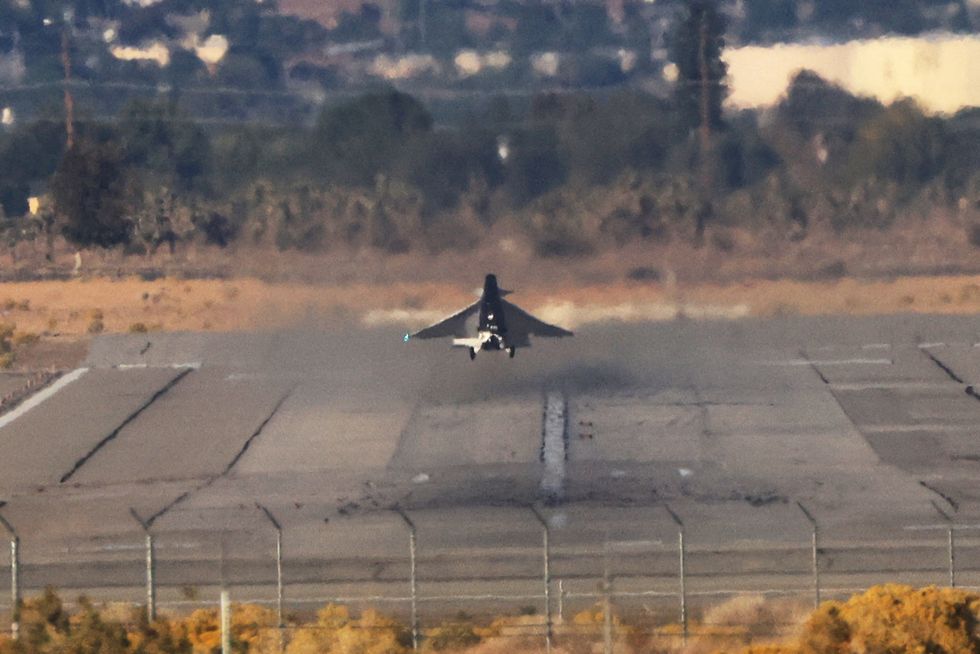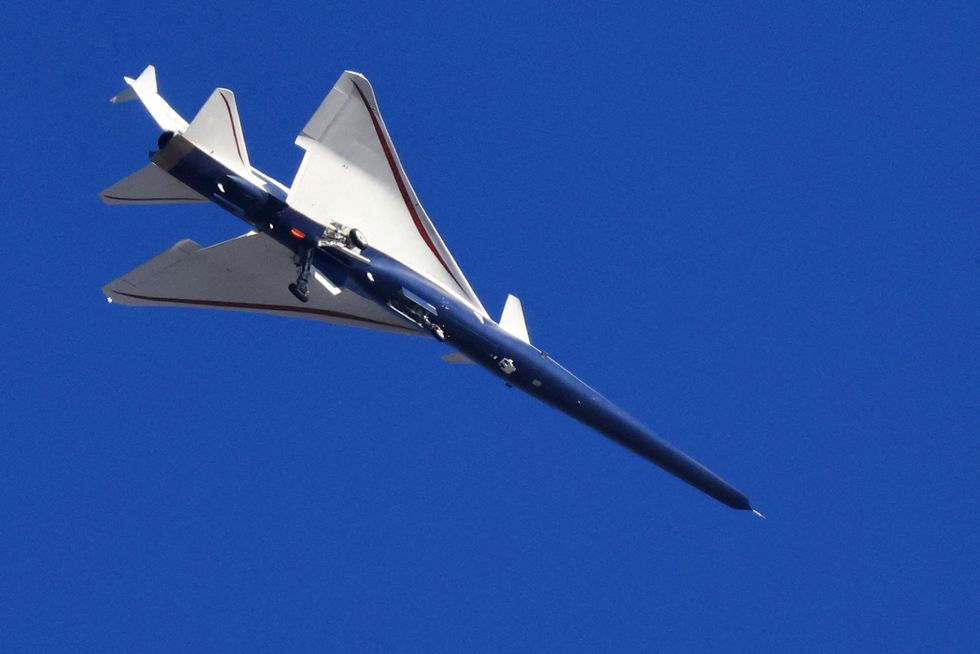Nasa's supersonic plane makes first flight as passengers one step closer to Concorde-like journey

It will be the first plane to fly supersonic since the Concorde
Don't Miss
Most Read
Trending on GB News
Passengers are a step closer to flying supersonic once again after Nasa launched its “sonic thump” plane for its first test flight.
The X-59 embarked on its first flight on Tuesday morning, flying over Edwards Air Force Base in California in an oval “racetrack pattern”.
While it can fly at speeds of 925mph, or 1.4 times the speed of sound, the plane remained at about the 240mph mark on the hour-long flight.
However, future tests will see the plane break subsonic levels.
TRENDING
Stories
Videos
Your Say
It is capable of reaching those speeds, breaking the speed of sound, without producing a loud sonic boom.
It instead will create a muffled “sonic thump”.
The X-59 left Palmdale Regional Airport in California a short time after 10am local time on Tuesday morning.
Thousands of people watched on through online flight trackers.

NASA's experimental quiet supersonic X-59 Quesst aircraft takes off from Runway 7 at Palmdale USAF Plant 42 in Palmdale, California
|REUTERS
The plane has only one seat, and while it is not a prototype for commercial airliners, it will be used to collect data to create a supersonic passenger aircraft, the first of its kind since the Concorde retired.
Commercial planes have been banned from breaking the sound barrier since 1973.
Residents submitted a series of complaints in response to sonic boom tests over Oklahoma City.
US President Donald Trump repealed the rule via an executive order earlier this year.
 First flight of NASA's experimental quiet supersonic aircraft X-59 | REUTERS
First flight of NASA's experimental quiet supersonic aircraft X-59 | REUTERSLATEST DEVELOPMENTS:
Nasa designed the X-59 and it was built by Lockheed Martin.
It is seen as the first step towards allowing passengers to travel at supersonic speeds across America.
This has only been restricted to military planes in rare circumstances.
The aircraft measures at just under 100ft and will be allowed to fly above a "select" number of US cities to collect data from "residents responding to the X-59's sonic thump".
Nasa gathered data from the engine's response during Tuesday's flight, according to The Aviationist.
“We record 60 different streams of data with over 20,000 parameters on board,” Nasa engineer Shedrick Bessent said.
“Before we even take off, it’s reassuring to know the system has already seen more than 200 days of work.”
If a commercial aircraft were to match the X-59's speeds, it could potentially cover a distance from New York to Los Angeles in under three hours.
That trip currently takes around double that time.
However, a trip from Washington DC to London could be done in about four hours instead of seven.
The Concorde could travel at 1,345mph, however, it was retired in 2003.
Mr Trump reversed the "outdated" rule, saying advancements in "noise reduction" made flights "safer, sustainable, and commercially viable".
More From GB News











